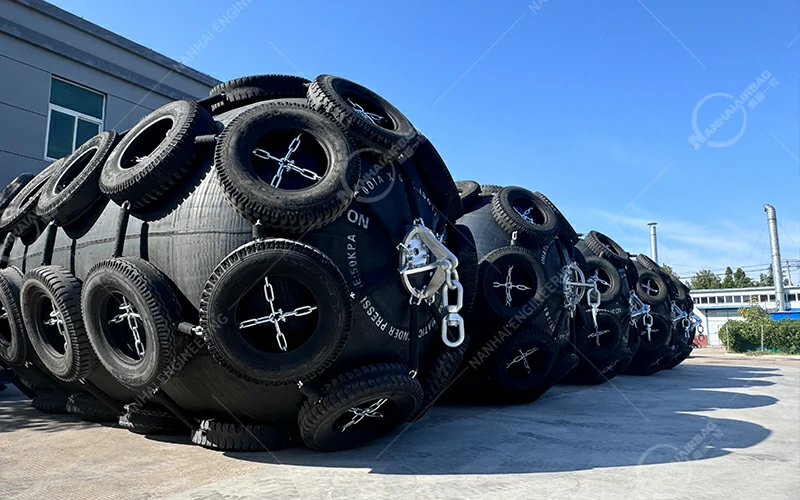Best Marine Fenders for Heavy-Duty Use
05/26/2025Why LNG Terminals Prefer Pneumatic Fenders for Mooring Safety?
05/27/2025Why ISO 17357 Compliance Matters for Pneumatic Fenders?
ISO 17357 Compliance: Why It’s Critical for Pneumatic Fenders
Pneumatic fenders are essential for safe and efficient berthing operations, particularly in ship-to-ship (STS) transfers and port moorings. However, not all fenders are created equal. Compliance with ISO 17357-1:2014 is crucial to ensure fender performance, safety, and durability.
Why Is This Issue Necessary and Urgent?
Imagine a scenario where two large vessels are conducting an STS transfer of crude oil in rough seas. If the pneumatic fenders used are substandard or non-compliant, the risk of fender failure increases significantly. Such a failure could lead to vessel damage, oil spills, environmental disasters, and endanger crew lives. This underscores the urgency of using ISO 17357-compliant fenders to mitigate such risks.
What Is ISO 17357-1:2014?
ISO 17357-1:2014 is an international standard that specifies the material, performance, and dimensions of high-pressure floating pneumatic rubber fenders. It also outlines test and inspection procedures to ensure fender quality and reliability. Nanhai is a leading marine equipment manufacturer with over two decades of expertise under its belt. Their pneumatic fenders are engineered to surpass the rigorous ISO 17357-1:2014 standards, ensuring you can count on top-notch performance. When it comes to quality marine fenders, Nanhai is a name you can trust.
Why ISO 17357 Compliance Matters
1. Safety Assurance: Compliant fenders are designed to absorb significant energy and reduce reaction forces during berthing, minimizing the risk of damage to vessels and port structures.
2. Quality Materials: ISO 17357 mandates the use of synthetic tire cord layers, which offer superior strength and durability compared to traditional materials like nylon mesh or canvas.
3. Manufacturing Standards: The standard specifies construction methods, including the incorporation of bead rings and turn-up processes, to ensure structural integrity.
4. Performance Testing: Fenders must undergo rigorous testing for energy absorption, reaction force, and pressure limits to verify their performance under operational conditions.
Risks of Non-Compliance
Using non-compliant fenders can lead to catastrophic failures during critical operations. For instance, fenders manufactured using wrapped methods without proper bead rings and turn-up processes may not meet ISO standards, compromising their performance and safety.
Choosing the Right Pneumatic Fenders
When selecting pneumatic fenders, ensure they are ISO 17357-1:2014 certified. Verify the manufacturer’s compliance through certification documents and inquire about their manufacturing processes. Opt for fenders that have undergone prototype qualification and meet all essential criteria outlined in the standard. After the fenders are made, NANHAI tests them ourselves or sends them to a third-party testing company, such as BV, ABS, or DNV, depending on what the customer wants. A test report is provided after the inspection.

People Also Ask
What is the difference between high-pressure and low-pressure pneumatic fenders?
High-pressure fenders have an initial internal pressure of 50 kPa or 80 kPa, offering higher energy absorption, while low-pressure fenders operate at 7 kPa and are suitable for applications requiring lower energy absorption.
Why is synthetic tire cord preferred in pneumatic fenders?
Synthetic tire cords, such as polyester, provide better resistance to fatigue and do not deteriorate in the presence of water, unlike materials like nylon, which can degrade over time.
How can I verify if a fender is ISO 17357 compliant?
Request the ISO 17357-1:2014 certification from the manufacturer, which should include test results and compliance documentation. Ensure the fender has undergone the necessary prototype qualification and meets all construction and performance criteria specified in the standard.
Ensuring ISO 17357 compliance in pneumatic fenders is not just about adhering to standards; it’s about safeguarding vessels, crews, and the environment. Always prioritize quality and compliance in your fender selection to ensure safe and efficient marine operations.
